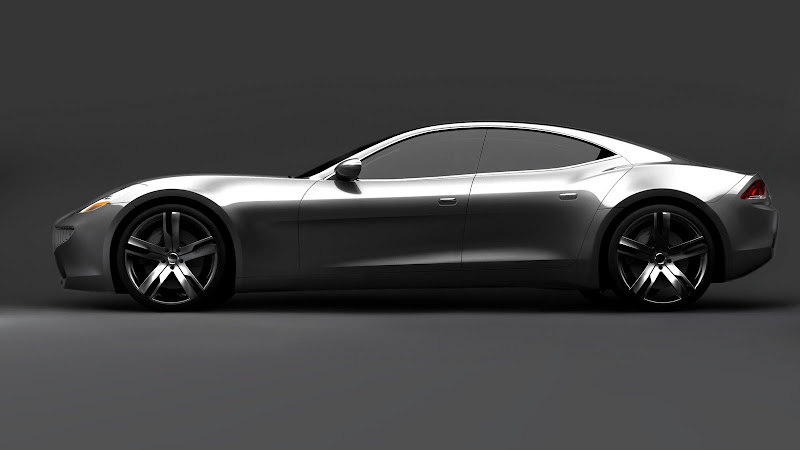Start from rest. You’re wedged into a small but reasonably comfortable cockpit. If you can get into a Honda S2000, you can probably get into a Tesla; if you can get into a Lotus Elise, you can absolutely get into a Tesla, since the frame rails are similar, but noticeably lower in the case of the former. With the radio playing but the climate control turned off here in downtown Toronto, the Tesla’s instrument panel shows a one-amp draw from the array of lithium-ion batteries on board. One amp isn’t much; in a moment or two, we’ll be drawing nearly four hundred.
There’s a parked car up ahead in our lane and a furious-looking cab driver next to us. He looks over. The light turns green. There’s a screech of tires from his Crown Victoria, but we hear it distantly, because we’re already two hundred feet ahead and moved over into his lane. The taxi driver is cursing his mount, but there’s no need. Only a dedicated all-wheel-drive drag special, such as a Switzer GT-R or Ruf 997 Turbo, can hang with this car in a short-distance sprint.
This is an electric car, but it isn’t silent. There’s an eerie howl from the drivetrain as we accelerate into the irresponsibility zone on the speedometer. The Roadster Sport’s one-gear transmission is limited to one hundred and thirty miles per hour, but it isn’t shy about reaching that speed. Long before then, you’ll be assaulted by wind noise -from the headliner, from the loose-fitting windows, from the gaps in the doors. Even at reasonable freeway speeds, you’ll want to divert a few amps to the outstanding sound system.
Alternately, you could spend those amps bouncing your passenger’s head against the seat over and over again, hopping on and off the throttle like a pre-teen misusing a golf cart. No internal-combustion street car has ever had such an instantaneous response. Motorcycle journalists like to talk about the “electric-motor torque” from a 1000cc superbike. I’ve ridden those bikes, and all I can say is that it’s grossly misleading to even compare the two. When you twist the throttle on a big-bore motorcycle, the butterfly plate opens, more air rushes in, and more fuel is delivered. It happens fast, but there’s time involved.
By contrast, the Tesla simply up and goes when you floor the… gas? Let’s say “floor the wattage.” Off it goes. No warning, no regrets. Summoning the top-level performance requires poking at a touchscreen on the tiny center console. Poke it once and it changes to “Max Range,” extending the Tesla’s reach to perhaps 200 miles between charges if you’re lucky. Poke it again and it says “Performance.” This screen-poking is supremely unsatisfying. Yes, you’re just changing an electronic setting, as with an Android phone or point-of-sale terminal, but there should be some sort of physical switch that hints at what you’re about to unleash. Maybe a big knife switch, something like what you’d use to turn on the power for a skyscraper. Or a set of machined-aluminum knobs on sliders, in the fashion of the old biplanes. Push them all the way to the console to unleash the power with a satisfying “clunk.” Balls to the wall.
No matter. If you want mechanical involvement from your Tesla, you can get it through the steering column. There’s no power steering. In the donor Lotus Elise, this rarely troubles the driver; in this considerably heavier car, it can be a bit of a forearm workout to parallel-park. There’s also some genuinely satisfying feedback, by which I mean kickback, in fast corners. This isn’t a back-road superstar. Too much mass for the platform and the AP Racing discs have to fight with the regeneration mechanism built into the motor.
This is a car for the urban cut and thrust, not the Tail Of The Dragon, although I’m sure you’d surprise some superbikes accelerating out of the turns. It’s not an electric Elise. It’s something completely different. Could it be… a luxury car?
It’s hard to consider a vehicle of this size and sparse appointment as a luxury car, but it’s certainly a luxury product. It costs well over $120,000 and it’s extremely rare. More pertinently, the lack of engine noise make it a uniquely soothing way to sit in traffic. If you have a stop-and-go commute, this is the way to make it tolerable. The electric motor and analog control interfaces make it possible to measure each crawl of the traffic with a pharmacist’s precision. You’re not “burning gas” just sitting there; instead, you’re drawing a miniscule amount of power from a massive reserve. Compared to the incompetently-orchestrated friction-burn of a double-clutch transmission in a downtown jam, this is pure mechanical Nirvana.
When that oh-so-rare hole in the next lane appears, your Roadster Sport will simply leap into it, no fuss, no muss. If you can see a gap, you can get to that gap. With any luck, there’s a power plug waiting at your destination. Using the plug from a motel air conditioner, I was able to bring the Tesla from three-quarters drained to nearly full overnight. Luckily, it wasn’t particularly hot that night.
There are a few aspects to owning an electric car that we haven’t really covered. Range anxiety, battery cost, future upgradeability. All of these may apply in spades to products like the Nissan Leaf, but with the Tesla they are no more relevant than the price of synthetic oil is to a Ferrari owner. You’re not buying the Tesla to save money. Hell, you’re probably not even buying it to save gas. This vehicle is its own reward. Tell your friends: The electric car has never been more alive.







 Posted in:
Posted in: 








0 comments:
Post a Comment